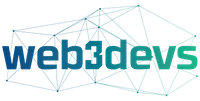
Newsletter #210: Apple’s Quiet Pivot
This week’s featured collector is Rubot
Rubot has a large collection of Ethereum NFTs. Take a look at lazy.com/rubot
If AI can instantly replicate any visual style, does owning that style still hold value in the NFT world?
Last week’s reveals suggests that despite AI’s growing ability to mimic virtually any aesthetic, most participants—roughly two‑thirds—still believe that controlling a distinctive visual style retains tangible value in the NFT ecosystem, underscoring a persistent premium on originality and provenance. Yet the remaining third is fractured: identical 11% slices say value now hinges on community context, has eroded because style is easy to copy, or remains uncertain altogether. That split highlights a nascent tension between technological abundance and cultural scarcity: while many collectors cling to the idea that authenticity confers lasting worth, a notable minority is beginning to question whether community narratives or mere ease of replication will ultimately redefine what makes an NFT desirable.
Apple’s Quiet Pivot Could Unleash a New Wave of Mobile NFT Trading
Apple’s latest revision to its U.S. App Store guidelines—forced by this week’s Epic Games v. Apple ruling—could quietly transform how collectors buy and trade NFTs on mobile. The federal judge found Apple had “willfully” ignored a 2021 injunction that barred the company from steering every in‑app transaction through its own payment system and from taxing external sales at a hefty 27 percent. Confronted with that judgment, Apple has lifted its long‑standing ban on iOS apps that so much as hint there’s an alternative checkout. Developers serving the U.S. storefront may now embed buttons or links that push users to a website—or even a custom wallet flow—where they can complete NFT transactions beyond Apple’s reach.
For collectors, the change eliminates one of the most stubborn friction points in mobile trading. Until now, iOS versions of OpenSea, Magic Eden and similar marketplaces functioned as glorified catalog browsers: you could admire the art, track floor prices and maybe share a listing, but if you wanted to buy or list a token you were shoved back to a desktop or a clunky in‑app browser. With Apple’s gate cracking open, those same apps can redirect you to a seamless external checkout—think deep‑linked wallet approval, clear gas‑fee display and an immediate return to the app once the transaction settles on‑chain. That smoother path should expand the universe of impulse buyers, tighten bid‑ask spreads on popular collections and, by freeing marketplaces from Apple’s fee, leave more creator royalties intact.
There are caveats. Apple’s concession applies only to sales that happen outside the app itself; premium features, power‑ups or any digital good transacted within the iOS environment still pay the Cupertino toll. Crypto mining, ICO facilitation and “task‑for‑token” reward schemes remain strictly prohibited, and the new latitude is confined to the U.S. storefront for now. Nothing obliges developers to craft a polished experience either—an awkward “Open in Safari” link won’t move liquidity—but savvy teams are already prototyping one‑tap buy flows that hand off to MetaMask, Rainbow or Phantom, sign the transaction and zap you back to the gallery before your coffee cools.
Assuming those UX improvements arrive quickly, the broader ripple effects could be substantial. Marketplaces that perfect mobile trading may capture disproportionate volume. Wallet providers will rush to streamline deep linking and push notifications for bids, sales and price alerts. Brands and creators, relieved of Apple’s surcharge, can plan mobile‑first mints pegged to real‑world events or exclusive merch drops. All of that activity ultimately benefits collectors, who gain the freedom to chase opportunities wherever they happen rather than waiting to reach a laptop.
Apple hasn’t suddenly embraced crypto ideology, but it has ceded just enough ground to let the NFT economy breathe on iOS. Keep your wallets updated, scrutinize those URLs before you sign, and watch how fast your favorite marketplaces push fresh versions through App Store review. The ones that nail mobile UX may ignite the next leg of NFT market momentum—and if the early signs hold, you’ll be able to ride that wave from the palm of your hand.
Learn more at Decrypt.
If iOS apps can now link to outside checkouts for NFTs, how do you expect this to affect your own collecting or trading habits?
We ❤️ Feedback
We would love to hear from you as we continue to build out new features for Lazy! Love the site? Have an idea on how we can improve it? Drop us a line at info@lazy.com










































